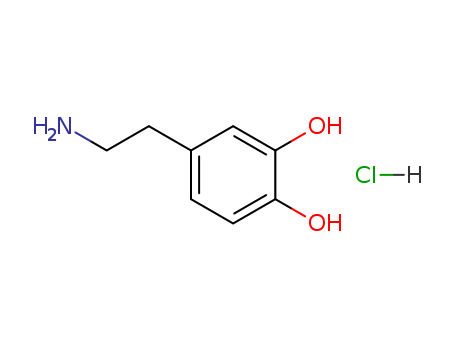- Chemical Name:Dopamine
- CAS No.:62-31-7
- Molecular Formula:C8H12ClNO2
- Molecular Weight:189.642
- Hs Code.:29222900
- European Community (EC) Number:200-110-0
- NSC Number:173182
- UNII:VTD58H1Z2X
- DSSTox Substance ID:DTXSID6022420
- Nikkaji Number:J4.120C,J968.027F
- Wikipedia:Dopamine
- Wikidata:Q170304
- NCI Thesaurus Code:C62025
- RXCUI:3628
- Pharos Ligand ID:6642Z5HPHSM5
- Metabolomics Workbench ID:37060
- ChEMBL ID:CHEMBL59
- Mol file:62-31-7.mol
Synonyms:3,4 Dihydroxyphenethylamine;3,4-Dihydroxyphenethylamine;4-(2-Aminoethyl)-1,2-benzenediol;Dopamine;Dopamine Hydrochloride;Hydrochloride, Dopamine;Hydroxytyramine;Intropin



 Xi
Xi

